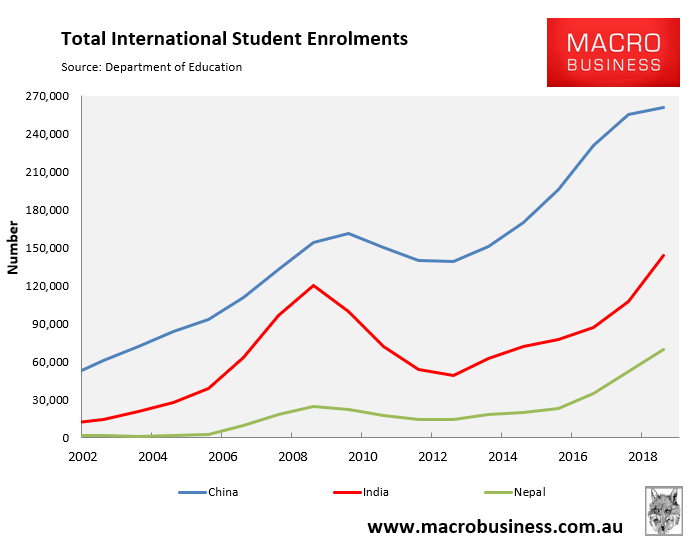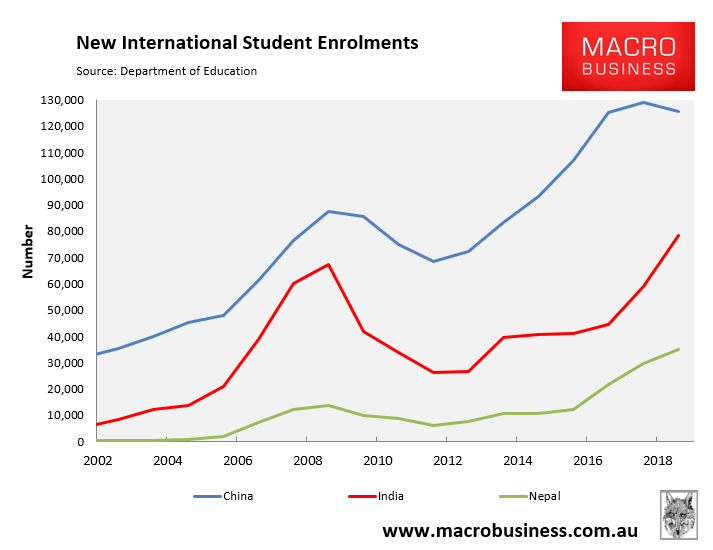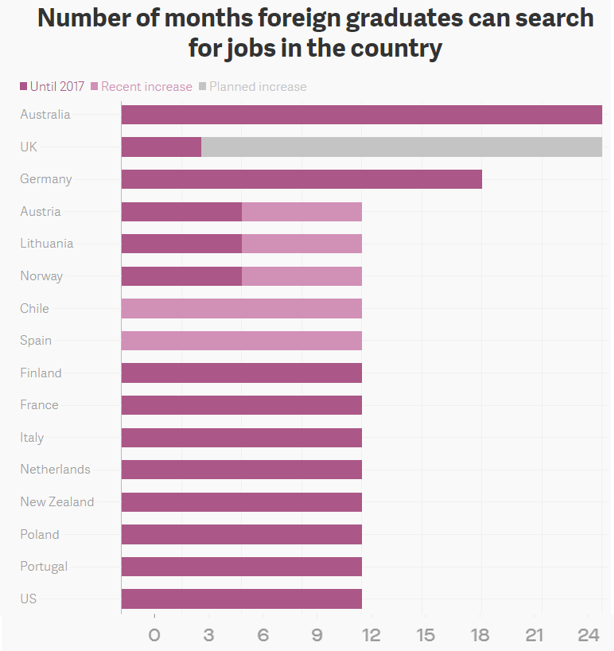International student enrolment data for calendar year 2019 has been released by the Department of Education, which reveals that India has become Australia’s key growth market for education exports.
Total student enrolments from India surged another 34% in 2019 to 144,000, and have ballooned by 195% since 2013:

India was Australia’s second largest source market for international students in 2019, behind China at 261,000.
Moreover, new enrolments of Indian students also surged by 34% in 2019 at the same time as Chinese enrolments fell by 2.8% (see next chart). This suggests that total Indian enrolment numbers would grow further in 2020.

With Chinese enrolments likely to fall heavily in 2020 on the back of the coronavirus outbreak, this raises the obvious question of whether the growth in Indian students can offset the decline and loss of revenue for Australia’s education sellers?
Certainly, Australia’s education industry sees India as a market with huge potential just waiting to be tapped:
India has 850 million people under the age of 35 who need to receive an education. The sheer growth rate of the country sees one million Indians turning 18 every month…
As the Varghese report says, if Australia can maintain its growth in international students and recapture its share of Indian students from its 2009–10 peak, then direct revenue from Australian education exports to India could exceed $12bn by 2035…
India is the largest opportunity in the world for Australian universities.
In reality, there are a range of barriers in place that will cap Indian student growth.
First, the UK recently matched Australia’s two-year post study work rights, thereby making Australia a relatively less attractive study destination for Indian students (see next chart).

Indeed, the chief executive of the International Education Association of Australia, Phil Honeywood, described the UK’s decision as a “game changer” that removed one of Australia’s key competitive advantages.
Second, the Department of Home Affairs recently changed the ratings for Indian student visa applications to “high-risk”, meaning applicants now need to prove higher English-language proficiency and the capacity to support themselves financially once they arrive in Australia.
These changes are designed to improve the quality of students entering Australia, as well as to stop Indians from using education visas as a backdoor to gaining work rights and residency.
Third, the federal government’s recent reduction in Australia’s permanent migrant intake, from 190,000 to 160,000, has lowered the chances of Indian students gaining permanent residency upon completion of their studies. This, in turn, has made Australia a relatively less desirable place to study, other things equal.
Finally, as noted by professor Salvatore Babones, there are big question marks over whether Indians are wealthy enough to drive an upsurge in student enrolments in Australia:
Australian universities are so eager to demonstrate international student diversity that they have even started offering scholarships that are specifically targeted at Indian students…
The fact that they must offer scholarships in order to attract more students from India and other “non-traditional markets across Asia” underscores the reality that the number of families in the region who can afford to pay full fees for an Australian university degree is not large enough to support Australian universities’ international student enrolment ambitions…
Even if a sufficient number of financially-capable Indian international students could be recruited to diversify Australian universities’ dependence on Chinese students, recruiting them would likely require Australian universities to reach deep down into the talent pool, reducing standards still further…
Australia’s success in attracting Indian students has been built around its relatively generous working rights and permanent residency.
With these advantages now diminished, the only way to significantly boost numbers is to reach deep down the quality barrel. This is clearly undesirable and is being stymied by the Department of Home Affairs’ “high risk” rating for Indian student visa applications.

